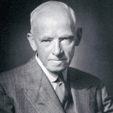

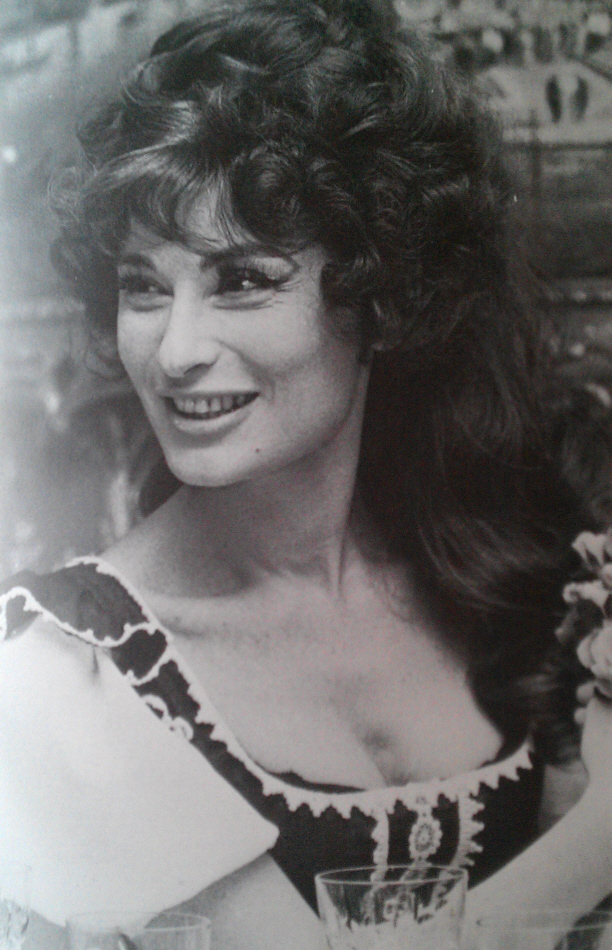
30 years experience and widely regarded as the world's leading authority on paintings and prints by Russell Flint
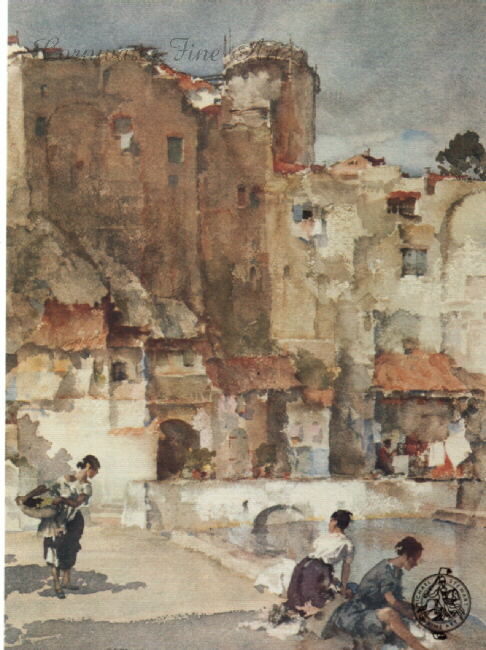
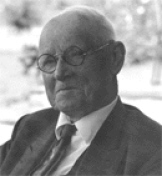
Sir William, born in 1880, entered the world of art as a commercial apprentice at the age of fourteen. Over the next seventy five years he was to rise to the pinnacles of his chosen profession. He became president of the Royal Society of Painters in Watercolours, Trustee of the Royal Academy of Art, Senior Royal Academician and a Knight Bachelor, yet the later professional critics chose to regard him as a great enigma. When he was singularly honoured by a retrospective exhibition of his works at the Royal Academy in 1962 the Art Critic of the Apollo magazine wrote, somewhat condescendingly, that although he "belonged so clearly,m so honourably to the line of English nineteenth century watercolourists, Russell Flint remains of almost no consequence at all... his art seldom rises above a level of incidental triviality, he has rarely produced a picture that meant anything more than the evocation of an imaginary landscape where olive skinned gypsies or English maidens disport themselves. The unlikely setting gives their nudity an air of respectability." Critics, of course have, by definition, to find something to criticise, but William Russell Flint rarely rose to such baiting.
Francis Flint, worked as a professional designer/watercolourist; on 4/4/1880 he became the father of William Russell Flint.
It was a great help for Flint that his father worked in an artistic areas.
In his younger days William Russell Flint went to the Daniel Stewart's College,
and then became a pupil of the Edinburgh Institution College, it was here that Russell Flint developed his work on line and colour
which turned into his particularly well known style painting .
Sir William Russell Flint was an apprentice for six years at an Edinburgh print factory, his job was that of a draughtsman, which helped to produce the skill needed to achieve what was to become amongst the finest watercolourists worldwide.. In the early 1900s Sir William Russell Flint started drawing illustrations for the London News. This was the time before photography had arrived to feed the population's thirst for knowledge via images, a time where drawings and engravings were the only means of portraying images in literature of any content, and where a certain subtlety and accuracy were essential in the portrayal of particular scenes.
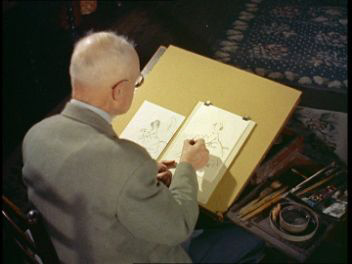
In the early 1900s and throughout world war I, Russell Flint created and illustrated books that have now become famous classics, such as Chaucer's "Canterbury Tales".
During the war, Flint served as Admiralty Assistant Overseer in the Royal Navy;
Sir William Russell Flint was able to visit Scotland and able to continue his studies at art college.
When the war was over in 1918, William Russell Flint travelled extensively throughout Europe, and in particular, La France, immensley ejoying painting and drawing the many fascinating scenes that he would encounter during his everyday adventures, many of Russell Flint's published prints show his travels across France, and capture a delicate and subtle atmosphere of that particular period. The Royal Academy accepted Russell Flint as 'associate' member and after a short time in 1933 he became a fulltime commitee member.

Three years later he was offered the prestigeous position of President for "The Royal Society of Painters in Watercolour", and throughout 1940-45, Sir William and Sybylle Flint made their home on a poultry farm in Devon. Having been in the Royal Air Force, Russell Flint could be permitted access to Devonport Dockyard,(this scene was published by Flint, and was critically acclaimed as a painting with wonderful perspective) and work, to his heart's content.
Syblle and William and were eventually able to return home to Peel Cottage in London,
and within 2 years he was awarded the title of Sir.
Sir William worked as a watercolourist the entirity of his life until he died aged 89.
The professional work he produced as an artist over many years helped him to achieve the ability to create a unique style that became
his forte. The paintings produced were looser and he was able to illustrate with superb professionalism, an array of depths that could give life to
architecture and all manner of exotic material, not forgetting his models.
Russell Flint through the medium of his paintings has managed to give, and indeed still does immense enjoyment to thousands of people the world over.
The original watercolour paintings and limited edition signed prints, have now set the benchmark for artists and collectors worldwide, as a superlative excellence in the use of watercolour,
and Sir William's fine paintings are enjoyed by many and regarded amongst the most excellent works on paper to date.
Our Nottinghamshire studio displays a large collection of Russell Flint's original work and his limited edition prints.
If you wish to visit , please call the phone number below
Sir William was admired by his contemporaries, and had a warm personality which he was eager to share with people of similar minds.
Francis Wighton Flint had been an artist on a more commercial scale and, Russell Flint started work in a printing factory, working there for 6 years,
and gained much knowledge about the industry including many processes that were involved in producing pictures.
Russell Flint of Scottish descent originally came from Edinburgh, 1880, his natural flair for using a watercolour brush soon caught the attention of his work colleagues
and private collectors.
The early part of Russell Flint's life was spent studying at the college in Edinburgh, he then worked for 6 yrs. in the litho printing factory, Russell Flint decided that a life and work in London was for him, and he an official medical artist, drawing with great precision, the human anatomy for the medical world. At the begining of the century Russell Flint took a position in a London magazine, creating illustrations, this was a move that helped him to show his talents across the world ,due to the distribution of the magazine. Sibylle Sueter, the daughter of an Admiral and Russell Flint were married the same year, Russell Flint's painting career was being much appreciated by both art critics and the general public so much so that within 2 years he became an independant artist, and was the illustrator for many great classical books such as The Odyssey of Homer, and The Tales of Canterbury Tales by Chaucer.
Throughout the first world war his position in the Navy was to oversee the airships as an Admiralty assistant. He travelled back to his native Scotland, and using a piece of the very airship that had been in his charge during the war, he painted a watercolour called 'Hilda's Bonnet'.
At the end of 1918, Russell Flint's artistic flair began to be recognized internationally. He was able to travel across Europe, producing a portfolio of wonderful watercolour paintings illustrating the gentle romantic countryside life on the continent.

In the 1920s Sir William Russell Flint was made an associate member of theAcademy Royal, and several years later his membership became fulltime. Shortly afterwards he was honoured by the Watercolour painters Royal Society with the title of President . The Flints left the turkey farm in Devon, that had been their home during the 14-18 war, Syblle and Russell Flint returned to their Campden Hill, cottage in London, where Russell Flint's career flourished in the aftermath of the war years and as the Britain gradually began to rebuild after the age of hardship, and began to look towards the pleasures of the arts again.
Flint's great knowledge of watercolour painting and his natural ability to portray the female form in its wonderful entirety produced an unmistakable and unique style that has made him famous throughout the world. Many artists have often attempted to copy his style and techniques, but none have ever suceeded in mastering the subtleties that made his paintings so wonderful.
Russell Flint became a Sir in 1947, and some 15 years later the paintings of Sir William Russell Flint were given the highest possible honour in a
large exhibition at the Royal Academy's, Diploma Gallery.
It was at this time that the Royal Academy president, Mr Wheeler
complimented the art of Russell Flint by describing it as wonderful piece of work and a puzzling skill.
As a successful artist in his own right, Russell Flint took the opportunity to travel, mainly in Europe, and a great deal in France
he painted and drew many scenes, a vast range of landscapes from Switzerland and Scotland to Spain and Italy.
For over 30 years Sir William Russell Flint'sthe signed prints and paintings have been our speciality See here
500 limited edition prints, personally signed and unsigned editions after his death; A fine collection original watercolours, are also for sale.
In the heart of the French countryside, near the beautiful towns of Brantome and St. Jean du Cole lies La Chabroulie, Holiday house to let in Dordogne France view.
Limited editions, in particular the limited edition signed prints, published before the artist's death in 1969, were in enormous demand at the date of publication,
the whole edition would often take no more than a few hours to completely sell out.
Unlike books, other editions of these prints have never been produced, and apart from the original painting these prints are the only original hand signed, editions,
the early ones being almost one hundred years old.